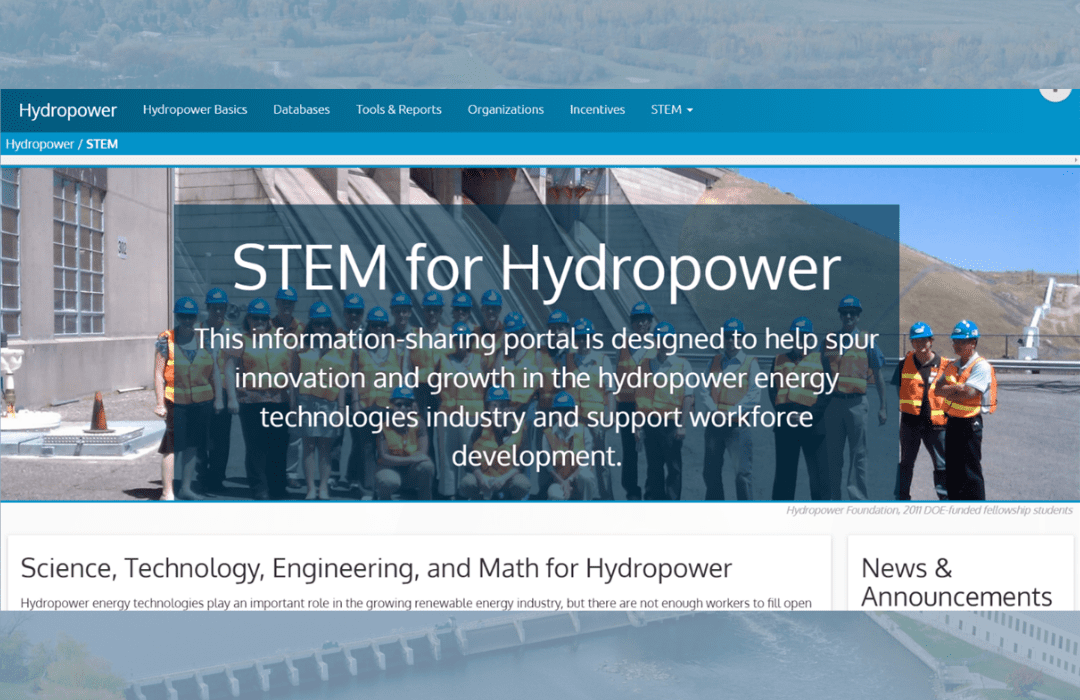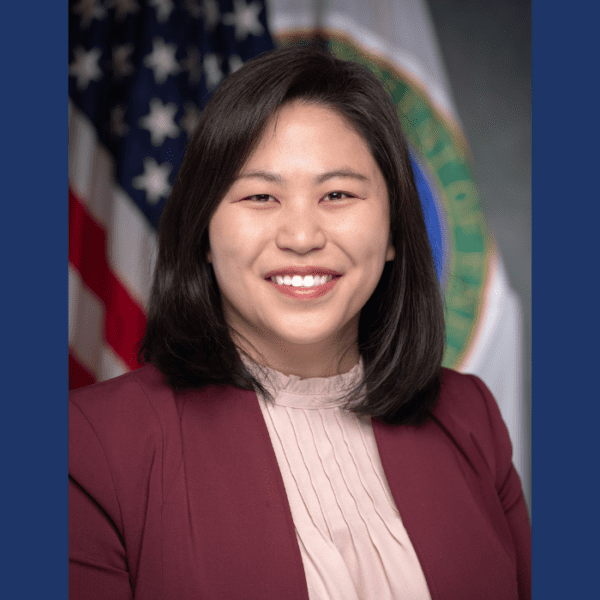The hydropower industry must prepare for a crucial shift in its workforce.
According to the 2019 Workforce Development for U.S. Hydropower report published by the National Renewable Energy Laboratory (NREL), about one-quarter of the industry comprises workers within a decade of retirement and most hydropower organizations report having difficulty with hiring.
To support the water power industry as the United States launches toward a clean energy future, there is a need to revitalize the U.S. approach to the water power science, technology, engineering, and mathematics (STEM) workforce and to focus resources on education and recruitment.
In a perfect world, students would have ample access to educational programs in water power; however, few of these programs currently exist in colleges and universities in the United States, and graduates are entering the water power workforce at low rates. STEM students with an interest in the green economy are generally unaware of and unprepared for work in the hydropower industry.
For this reason, the U.S. Department of Energy (DOE) Water Power Technologies Office (WPTO), in conjunction with the Hydropower Foundation and NREL, are working to provide accessible, easy-to-use resources to students, educators, and industry professionals through the continuous engagement of these groups and other stakeholders.
Need for a ‘One-Stop Shop’ of Hydropower Resources for Students, Educators
Before WPTO launched the STEM Workforce Development project, relevant hydropower resources were scattered. It was difficult for interested students and educators to access information regarding the industry or learn how they could contribute to it. A singular database of educational resources and curricula didn’t exist for professors and teachers to utilize, and there was no comprehensive or free online library of hydropower-specific educational materials. Therefore, the STEM project prioritized the development of the hydropower STEM portal, an open, online repository of materials that are specific to hydropower technology, workforce development, and educational and career opportunities. The portal is a dynamic resource, continuing to bring together an array of dispersed resources that are otherwise difficult to find.
What’s Currently Available on the Hydropower STEM Portal?
The existing STEM portal and accompanying water power web pages have several features that students, educators, and industry professionals can use to spur innovation and growth in hydropower and support workforce development.
The portal contains:
- An overview of fundamental hydropower technologies, including traditional types of plants and turbines, the history of hydropower, and current research
- External databases and knowledge hubs of hydropower information
- Lists of hydropower stakeholders and legal incentives for U.S. states to commission hydropower projects
- Workforce data and analysis tools
- Hydropower curricula for educator use
- Professional networks, professional profile videos, and links to employment opportunities
- Interactive maps showing locations of hydropower plants and virtual tours of water power sites, hydropower educational programs, and industry-led educational programs
- Lists of research publications from the government, industry, and academia
With these resources, the portal aims to cater to hydropower stakeholders and further engage them in available learning and career opportunities.
How Does This Initiative Affect the Hydropower Industry?
Difficulty in hiring and an expected increase in demand for hydropower workers provides further evidence that strengthening this pipeline is a priority. A clear pathway for students and young professionals to enter the workforce is a necessary near-term focus of the project. If equipped with sufficient learning materials and opportunities to engage with hydropower, students could more easily enter the workforce.
Stakeholders who are made aware of and have access to the hydropower STEM portal will be more able to facilitate this pipeline.
Educators without an extensive background in hydropower technologies can incorporate curricula found on the portal into their courses.
Industry professionals can learn what materials students are exposed to and request to add resources they deem pertinent to incoming employees.
Students with preliminary curiosity in renewable energy or the green economy can learn about a career in hydropower and can get excited about what the industry has to offer.
Future Content Development Goals: The Power of Diversity, Equity, and Inclusion
How can we succeed in building a robust, resilient hydropower workforce that benefits all Americans while encouraging the employment of workers with various backgrounds and perspectives? And how do we address these barriers and work toward equitable solutions that benefit the hydropower industry at large?
DOE is increasingly focused on the role of diversity, equity, and inclusion (DEI) in all aspects of its work, including its hydropower STEM projects.
For this reason, ongoing development of the portal concentrates on outreach to underserved communities and integration of relevant DEI principles on portal web pages. The project team recently updated the professional network development page of the portal, adding professional organizations that work directly with underserved populations in energy and STEM.
The team also researched Minority Serving Institutions and Historically Black Colleges and Universities that have water power and renewable energy degree programs and will add these to the interactive map web pages. Further development will likely emphasize the need for diverse recruits in hydropower, increased communication about portal resources to underserved communities, and the identification of opportunities to work with underserved communities on other aspects of the project.
The project team also hopes to advance engagement with STEM hydropower students and expand available resources via the development of a Hydropower Collegiate Competition.
Success of the NREL-led Solar Decathlon, DOE’s Marine Energy Collegiate Competition, and DOE’s Collegiate Wind Competition suggests promise for a new, hydropower-focused competition.
Contributors to this article include: Arielle Cardinal, Ruth Baranowski, Jeremy Stefek, and Elise DeGeorge, National Renewable Energy Laboratory (NREL); and Bree Mendlin, Hydropower Foundation.
The next article in this series will further discuss the benefits of a water power collegiate competition and its role in hydropower workforce development.
Further Reading
Attracting the Next Workforce Generation: Actions Underway












